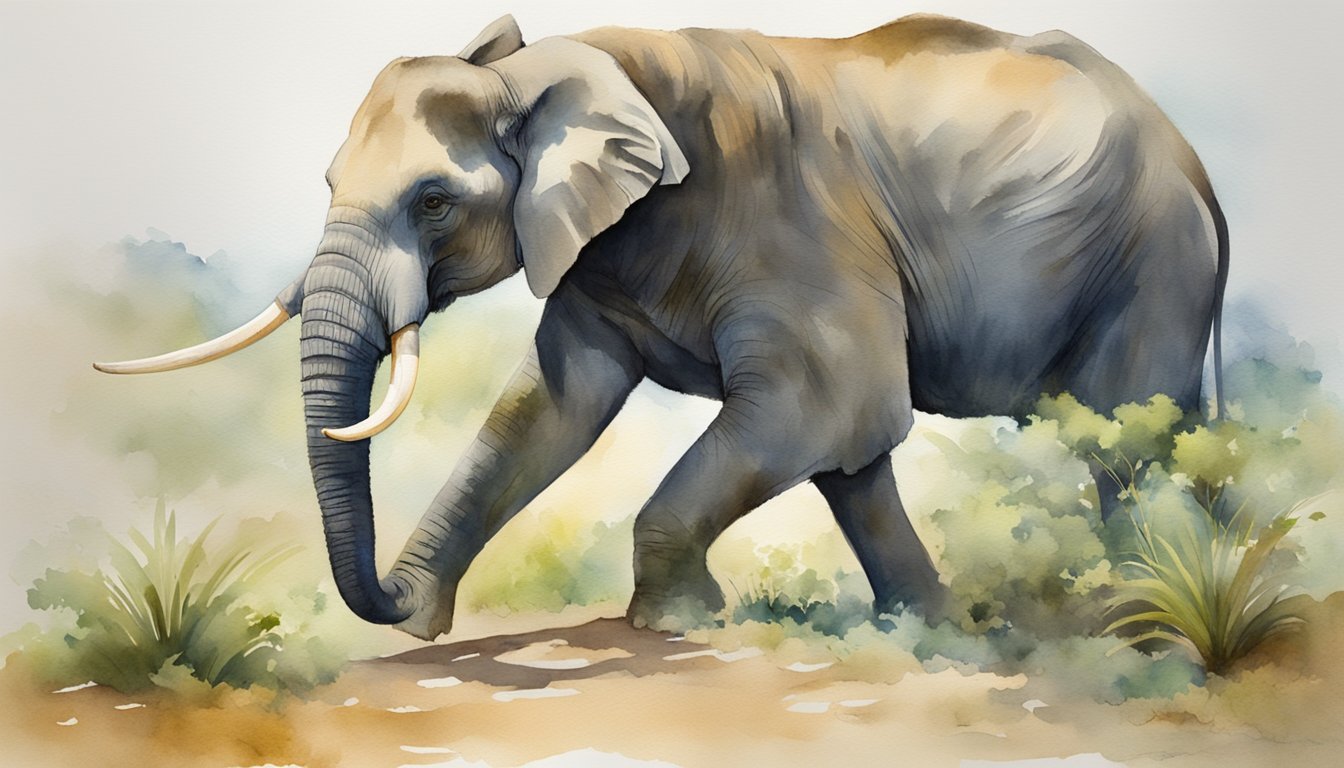Understanding Musth in Elephants
Musth is a complex biological condition experienced by bull elephants, marked by elevated testosterone levels and specific behavioral patterns. It plays a crucial role in their reproductive cycle and social hierarchy establishing dominance and influencing mating success.
Physiological Changes During Musth
Male elephants undergo significant hormonal changes during musth, signaled primarily by a rise in testosterone levels that can be as high as 60 times their normal levels. The temporal glands located on the sides of their heads swell and secrete a hormone-rich substance called temporin. This phase can last anywhere from a couple of weeks to several months, with a pre-musth period consisting of swelling in the temporal glands and a post-musth phase where the swelling and secretion gradually subside.
Behavioral Patterns in Musth
During musth, bull elephants exhibit distinct behavioral changes. They become more aggressive, often entering into fights for dominance, which is an essential factor in securing mating rights with female elephants. The secretion of temporin and the increased level of hormones act as pheromones to attract females. Elephants in musth exhibit a distinct walk, commonly described as a swagger, and often make a low-frequency vocalization known as the “musth rumble,” believed to signal their heightened state. These changes reflect not only their physical readiness to mate but also establish their standing within the social hierarchy.
Musth Management and Welfare

Musth in elephant bulls presents unique challenges and important considerations for both wildlife management and animal welfare. These periods of heightened hormonal activity and increased aggressiveness require informed strategies to ensure the safety of the elephants as well as their human caretakers.
Dealing with Musth in Captivity
In captivity, managing musth is essential for maintaining the welfare of both the elephant bulls and their mahouts. Elephant bulls in musth produce a tar-like chemical from their temporal glands and exhibit a distinctive musth swagger, signaling their reproductive readiness. Mahouts and zookeepers use a combination of behavioral cues and physical barriers to maintain safety during these times. They also provide special care and monitor the health of these elephants closely, as they often display an increase in aggressiveness. The management techniques aim to balance the needs of the elephants to express their natural behaviors with the need to prevent potential injuries to humans and other elephants.
Conservation Implications of Musth
In wild populations, musth is a natural reproductive strategy that can influence the dynamics of elephant herds. Bull elephants in musth emit a specific low-frequency vocalization known as the musth rumble, which plays a role in establishing dominance and may affect the estrous cycle of females. Conservationists monitor these patterns as they can impact the health and genetic diversity of elephant populations. Understanding musth is also pivotal in mitigating human-elephant conflict, as bulls may become more inclined to raid crops due to their intoxicated state and search for nutritionally rich foods. Good management practices in both zoos and conservation areas are vital for the welfare of elephant bulls and the safety of the people who live and work around them.

